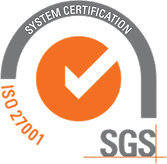Diffusion Model
Diffusion Model
A diffusion model is a generative AI architecture that creates data—most commonly images—by starting with pure noise and gradually refining it into a realistic output over a series of learned denoising steps. It’s trained by learning to reverse the process of adding noise to real data, allowing it to reconstruct content from randomness.
How It Works
When you input a prompt like “a cat in a spacesuit” into a text-to-image tool powered by a diffusion model, the system doesn’t generate the image instantly. Instead, it begins with a random pattern of pixels (noise) and refines it step by step, using what it has learned about how cats, spacesuits, and composition typically look. Each step nudges the image closer to a photorealistic or stylistically accurate result.
Applied Use Cases
Diffusion models are now core to leading text-to-image generators, and are expanding into areas like:
- Video generation (e.g., text-to-video synthesis)
- Audio and music creation
- 3D object modeling
- Scientific simulation (e.g., protein folding, climate modeling)
Their structure allows for fine control over style, detail, and content alignment, making them ideal for creative and industrial applications. However, because they require many compute-heavy steps, they are optimized for GPU-intensive environments in the cloud.
Summary
- Generates media by iteratively transforming noise into coherent output
- Learns to reverse a noisy data corruption process
- Dominant in image generation, expanding into video, audio, and simulation
- Built for cloud GPU infrastructure due to multi-step inference demands


즉각적인 GPU 클라우드 액세스를 통해 인류의 AI 야망을 강화합니다.
2860 잔커 로드스위트 100 캘리포니아 산호세 95134
GMI Cloud
278 Castro St, Mountain View, CA 94041
Taiwan Office
GMI Computing International Ltd., Taiwan Branch
6F, No. 618, Ruiguang Rd., Neihu District, Taipei City 114726, Taiwan
Singapore Office
GMI Computing International Pte. Ltd.
1 Raffles Place, #21-01, One Raffles Place, Singapore 048616
Sign up for our newsletter
Subscribe to our newsletter


© 2024 판권 소유.

